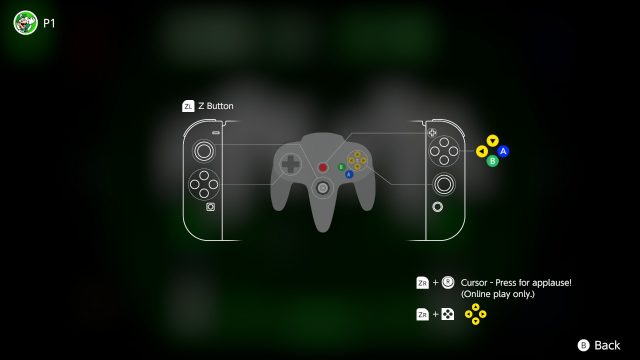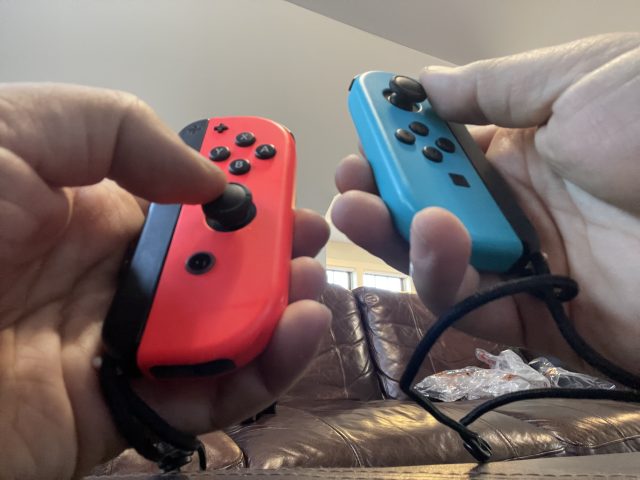Update (5:35 pm ET): As user Cuesport77 points out on Reddit, Nintendo offers a system-level button remapping function that can get around most of the issues highlighted in this piece. Going into the Switch’s system settings and swapping the left and right analog stick inputs (as well as the inputs for any other buttons you want) can help provide more standardized “dual stick” controls for the game.
This isn’t the most convenient option, as players will have to undo the customizations when switching from GoldenEye to any other Switch game (and then back when going back to GoldenEye). These customizations also don’t seem to be available on any controller connected to the system when in portable mode.
Nonetheless, Ars regrets not recognizing this option existed before publishing the below story, which is included in its original form (with a few noted updates) below.
Original story: After 25 long years, players can finally enjoy official ports of GoldenEye 007 on platforms newer than the Nintendo 64. Those playing the game on Nintendo Switch, however, face a set of awkward, non-customizable control schemes that suffer greatly in the transition from the N64’s “batarang” to the Switch’s Joy-Cons.
Just like Rare intended
Anyone who’s played a console first-person shooter in recent decades expects a basic control paradigm that works across the genre: the left analog stick is used for lateral motion (forward, back, or side to side), while the right stick is used to turn and look around. Decades of muscle memory have trained console shooter players to expect this basic split, and anything else just feels instantly “off” after all this time.
What many GoldenEye fans have forgotten (or perhaps never knew) is that the N64 original was one of the first titles to use that kind of left thumb/right thumb control dichotomy. GoldenEye‘s built-in “1.2 Solitaire” control scheme mapped lateral movement to the oft-neglected N64 D-pad (positioned under the left thumb), while turning and looking around was controlled by the system’s single analog stick (positioned, in this case, under the right thumb).
Savvy players know this layout felt more natural than the “1.1 Honey” default, which awkwardly mixed front-back movement and left-right turning on the left stick with left-right sidesteps and up-down looking on the directional C buttons. And even if many GoldenEye players ignored it at the time, it was there as an intended (and very forward-thinking) control option 25 years ago.
Sure, many committed GoldenEye players no doubt learned to circle-strafe and quick-aim with the best of them using GoldenEye‘s cumbersome default control scheme. Still, there’s a reason subsequent FPS control design has more closely resembled GoldenEye‘s “1.2 Solitaire” and its segregation of movement and turning/looking to different thumbs. After all this time, the “dual-stick” split still feels like the most natural way to do first-person movement on a console controller.
Flipping the Switch

Unfortunately, GoldenEye‘s transition to the Switch has flipped the old left/right thumb muscle memory on its head. Now, if you choose “1.2 Solitaire” from the built-in control options on the Switch, the right stick ends up used for lateral motion (standing in here for the directional C buttons) while the left stick is used to look around (You can also use the directional buttons on the left Joy-Con to move, but without turn/look controls on the right stick, this is not a very useful option).
Some players already change their FPS controls to this kind of “southpaw” control scheme and will feel right at home with the “flipped” Switch controls here. But the vast majority of players will probably feel like they’re playing in a mirror, and have to relearn controls instincts that have been burned into their thumbs for decades.
Nintendo doesn’t offer any game-level or emulator-level customization options to reconfigure these controls to fit better with their expectations [Update: There are system-level customization options, though; see above]. Contrast that with the Xbox version of GoldenEye, which also released today as part of Rare Replay or an Xbox Game Pass subscription.
-
The default control scheme on Xbox’s version of GoldenEye 007 is a new “3.1 Diamond” layout designed specifically for the Xbox controller.
-
You can also customize the Xbox controls to map whatever function to whatever button you want.
On Xbox, the game defaults to a new control scheme specially designed for the Xbox controller, with the left stick controlling movement and the right stick controlling turning/looking. Moreover, the Xbox version allows full customization of any game function to any button or direction on the controller.
We’ve talked before about how the Switch’s N64 emulation leaves a lot to be desired on the control front. The lack of control customization options is especially noticeable in GoldenEye, though, an FPS that relies so heavily on the ability to move and aim intuitively.
A partial solution
The best solution to this Switch-based control problem is probably to pick up one of the official Switch Nintendo 64 controllers Nintendo offers for sale on its website. But that’s not a practical option for many since the $50 controllers are almost constantly sold out these days (to say nothing of their uselessness when playing in portable mode).
After an entire morning of fiddling and experimenting, though, I’ve found the best solution for my GoldenEye Switch woes was to, counterintuitively, flip the Joy-Cons. By holding the right Joy-Con in my left hand, and vice versa, GoldenEye‘s “1.2 Solitaire” control scheme finally approaches the “normal” feeling of left-stick movement and right-stick turning/looking I was looking for.

Kyle Orland
This control “solution” has some obvious problems—the Joy-Cons were obviously not designed to be held this way. Even with the standard, rounded wrist strap attachments hooked on, the Joy-Cons don’t fit comfortably in the wrong hands.
Everything feels out of place with the Joy-Cons mixed up, too, from the analog sticks (which are now arranged with the left stick “low” and the right stick “high” on the hand) to the shoulder buttons (which now require an awkward, extra-long reach to hit) to the face buttons (which now require you to hit the A and B buttons with the “wrong” thumb). This solution also doesn’t work when playing the Switch in portable mode, obviously.
Still, it’s the best option I’ve been able to come up with to make GoldenEye on the Switch feel like I expect it to feel. It’s a shame, because Nintendo could easily fix this with some sort of remapping option for its Switch N64 emulator [Update: Or including easier switching options for the system-level control customization mentioned above]. As it stands, though, the only version of GoldenEye 007 with online play is also the one with the worst control options available.
![How to fix GoldenEye 007’s control issues on the Nintendo Switch [Updated] How to fix GoldenEye 007’s control issues on the Nintendo Switch [Updated]](https://cdn.arstechnica.net/wp-content/uploads/2023/01/2023012715583600_s-760x380.jpg)
